When a child develops symptoms of parasitic infestation, they should be taken to a pediatrician. Only a doctor will order an exam. In children, blood is drawn from a vein to check for parasites. The sample collection rules do not change:
- The material is taken on an empty stomach.
- The day before the test, do not eat fatty, fried, spicy (if the child eats that).
- Sparkling water should not be drunk on the day of collection.
A young child should be prepared in a fun way for the test so that he is not afraid of the syringe, blood and people in white coats. If your baby starts crying and shaking, the nurse may not pick up the material carefully, leaving a bruise on your arm. When the needle is removed from the vein, the child should hold the pen for 5-10 minutes, bending at the elbow.
Symptoms of the presence of worms
Worms can be suspected for several reasons. Pinworm infection is characterized by itchy anus. This sign, which indicates an infection, usually worries a person at night. Pruritus arises from the fact that this type of parasite prefers to live and reproduce in the intestines. Each day, an individual of this worm can lay up to 15, 000 eggs. These eggs mature after 6 hours.
Infection with other types of parasites is more difficult to determine. Symptoms include the following conditions:
- Weakness in the body.
- Muscle and joint pain.
- Sleep disturbance.
- Decreased performance.
- Headaches.
- Signs of intoxication.
- Loss of appetite.
These symptoms arise from the fact that parasites, by multiplying, contaminate the organism with the products of their vital activity. They also disrupt the functioning of the liver, bile ducts, intestines, and other important organs that are responsible for ridding a person of poisons and toxins.
How do I get tested for worms at home?
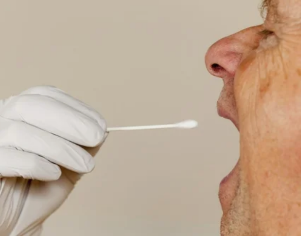
In addition to clarifying the question on the topic "what tests to pass for a parasite for an adult", you can also understand that the primary diagnosis can be done at home. In particular, instead of testing for worms, they use the following homebrew methods:
- Enema. Helps to identify living helminth individuals and their eggs in feces. It is advisable to perform the procedure late at night, since it is during this period that the peak of parasitic activity occurs. By emptying the intestines, both worms and their eggs can be detected in the feces, if they are present in the body and are in the reproductive stage;
- Quick worm test. The test pack contains a glass slide and special adhesive tape. The tape is glued to the anal folds in the morning after waking up and then, once peeled off, is applied to the glass. Pinworm eggs can be seen with a magnifying glass, if applicable;
- Test for worms by collecting saliva. In this case, the kit contains a container for collecting biomaterial and 11 reagents designed to detect various parasites. The reagents can identify the toxins that worms release into human blood. The information content of this method is 100%. Furthermore, invasion can be detected in this way in both the acute and chronic stages. The only drawback to such a test is its inaccessibility to a potential buyer. If it is possible to find a complex for determining helminths, then its price will be considerable.
Regardless of how you would like to understand the state of your body on your own and find out what tests are performed to detect helminth invasion, remember that accurate results can only be obtained with specialized diagnostics of blood and stool, to which yourdoctor will refer you.
According to statistics, up to 80% of the population is infected by parasites that pose a serious danger to health, destroying internal organs and causing the development of complications. When taking anthelmintic drugs, you need to make sure which worms are present in the body. Since a person can be attacked by dozens of different species, adult parasite tests are performed by different methods, which allow determining the existing form of helminth invasion.

Other diagnostic procedures
PCR diagnosis is based on the identification of helminths in the human body through DNA tests. The sensitivity of PCR to parasites is high, so the results will be as accurate as possible. But this type of diagnosis will not allow to identify the degree of infection. Another proven and well-known diagnostic study in which invasions are detected is the energy information diagnosis. During the procedure, a person is exposed to bioresonance waves, which show the presence or absence of parasitic individuals in the human body. Some doctors believe that this method is the best, the most informative and comfortable, and at the same time effective. There is also a complex diagnostic method called a parasitic panel. Thanks to this type of diagnosis, it is possible to identify the presence of helminths in the body, the degree of invasion and the type of parasite.
In addition to specific diagnostic measures that can identify helminthic invasions, the patient is shown to pass a general blood and urine test. The fact is that inflammatory complications develop from parasites in internal organs, and general blood and urine tests in this case will show an increase in the number of leukocytes and erythrocytes, while hemoglobin will decrease.
Blood test for helminths in a child
Blood tests in children can be divided into groups based on the frequency and purpose of the study:
- preventive - regular;
- barrier;
- as intended.
Prophylaxis is prescribed to children regularly. They are done to prevent possible illness once a year. For the clinical exam with any symptoms, the exam includes a complete blood count.
Barrier tests are prescribed when applying for a kindergarten, school and attending classes in sports clubs, in other cases, including quarantines for various viral diseases. To exclude infection of infants, adults working in child care centers, producing and selling food, regularly undergo a barrier blood test.
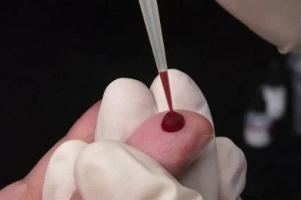
By appointment, tests are performed in case of suspected helminthic invasion, in order to determine the type and type of helminthiasis in a child or to rule out the diagnosis. If helminthic invasion is suspected, children are screened for helminths and blood antibodies:
- general;
- blood test for ELISA - enzyme immunoassay.
In a general test, blood is drawn from a finger. By the number of erythrocytes and leukocytes, it can be determined that there are pathogens and foreign microorganisms and bacteria in the body. For the ELISA test, blood is drawn from a vein and the amount of antibodies and antigens is determined.
Antibodies and antigens
Having received a signal about the presence of foreign cells or organisms in the body, the immune system sends a signal to the glands to produce special proteins, immunoglobulins, which destroy the foreign protein and remove it from the body through theblood. The type and amount of antibodies depend on the degree of infection and the duration of the invasion.
Antigens in the blood are the remains of the dead worms themselves and the products of their vital activity. After the decomposition of the protozoa and the toxins that they release, they are eliminated by the blood. The blood is cleared of antigens in the kidneys and liver. As a result, what remains of the parasites, broken down proteins, and toxins are excreted in the urine and feces.
Immunomodulators and their characteristics
If you suspect a helminthic invasion in a child, if the general analysis showed an increase in the number of red blood cells, blood is drawn for antibodies against helminths and, according to their presence in the blood and the proportion with theantigens, a diagnosis is made.
To fight foreign microorganisms, the immune system creates various antibodies. Protein cells constantly "patrol" the child's body, detecting proteins and foreign bodies, including splinters, and signaling the immune system when they are detected.
In the initial stage, the production of an IgA-like immunoglobulin begins to protect the body from outsiders. It is he who is in the blood since the first days of the invasion. After 10 to 15 days, if the IgA has not coped with the stranger, the production of immunoglobulin IgM begins to help them. Finding it in the blood indicates the transition from helminthiasis to a chronic form and the presence of worms for more than 2 weeks.
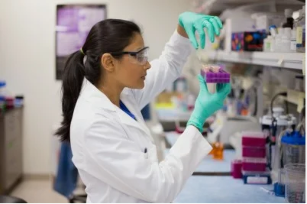
How to prepare for a blood test for parasites
For a blood test to show a reliable result, it must be carefully prepared in advance. First of all, you need to stop taking medications that can affect the blood count to one degree or another. These conditions are necessary for blood enzyme immunoassay, serological analysis, and hemostatic analysis.
Also, before testing the blood for the presence of parasites, it is necessary to switch to proper nutrition, rich in fresh vegetables and fruits, exclude alcoholic beverages, fatty and calorie-rich foods. This diet should be followed three days before the scheduled lab test. It is recommended not to eat anything immediately before the analysis. If a blood test is done for parasites on an empty stomach, lamblia, pinworms, and roundworms are found in the blood more reliably.
How to determine the presence through laboratory tests?
Stool analysis for parasites in adults and children
Preparation
To reliably determine the presence of parasites in the human body, you need to prepare properly, then you can get an accurate result and make a final diagnosis. If it is demonstrated that the patient takes a sample for the study of the stool, 5-7 days before the procedure, it is necessary to eliminate from the menu all products that affect the color and consistency of the stool, as well as medications that may affect thedata reliability. These are primarily anthelmintic, laxative, and antibiotic medications.
How is the stool analysis performed?
It is important to deliver a sample for verification to the laboratory within one hour so that the stool analysis for parasites is reliable. If the sample is kept at home for a long time, the results may be inaccurate
Fecal tests for parasites are not always reliable, therefore, to ensure that a helminth lives in a person, a series of more precise diagnostic measures must be taken.
Decryption
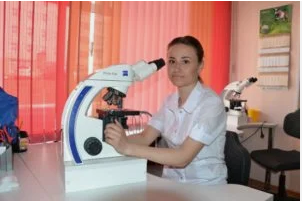
In the presence of parasites in the feces, using a microscope, the laboratory assistant in the samples identifies the eggs or larvae of helminths. It is also possible to detect adult fragments, which break off from the main body and enter the feces.
Histological coprogram
A more precise technique that provides a reliable and detailed result is called a histologic coprogram. The samples are monitored by powerful optical devices, which allow determining the presence of larvae and helminth fragments in each thin section of stool. Histological methods are effective, they give accurate results, in addition to identifying parasite eggs and larvae, they allow determining the types of parasites.
Preparing to scrape
Parasite laboratory diagnosis includes a scraping study to identify helminths. The day before, the day before taking the sample, it is better for a person not to perform hygiene procedures of the external genital organs. These measures are necessary for the result to be reliable and to be able to diagnose the problem.
You can also do a parasite test by scratching at home. Before collecting the sample, wash your hands with soap and wear disposable rubber gloves. Next, you need to bend forward, spread your buttocks, and hold a cotton swab around the anus. Then return the dipstick to the test tube and close the lid. Deliver the sample to the laboratory within 40 minutes; otherwise the test will not be reliable.
How do I prepare for a blood draw?
Donating blood to detect the presence of parasites is the same as performing a general test:
- Blood is drawn from a vein.
- The last meal should not be later than 12 o'clock.
- 2-3 days before the test, it is recommended that a person exclude heavy, spicy and sweet foods and alcoholic beverages from the diet.
The most reliable diagnosis that will show the presence of helminths in the human body is the serological diagnosis. This is a comprehensive test that will show if there are specific antibodies in the serum that are produced during helminth invasion. The test is performed under laboratory conditions. Thanks to it, you can quickly check if a person is infected with helminths and what kind of parasites lives in the body.
An enzyme-linked immunosorbent assay for parasites is another effective technique for identifying whether helminthic infestations exist and to which species the helminths belong. With the help of ELISA for parasites, it is possible to investigate the behavior of specific antigens that are produced by the human body during helminthic invasions. If the amount of immunoglobulins exceeds normal levels by 1, 5, and 2 times, it is safe to say that a person is infected with parasites.
General clinical methods
If it is necessary to confirm the defeat of human organs by worms, the doctor orders a targeted analysis to identify the parasites: the diagnosis of exactly those fluids in which their traces are found with absolute precision (feces if suspectedintestinal worms, bile - with liver lesions). What tests are passed for this?
Under the assumption of helminthic invasion, the usual prescriptions will be general clinical methods of investigation and diagnosis.
Standard stool test
The first method allows you to detect intestinal invasions by these parasites:
- nematodes: roundworms, roundworms, roundworms, crooked heads;
- trematodes: various trematodes, schistosome;
- tapeworms - tapeworms and tapeworms (small and wide).
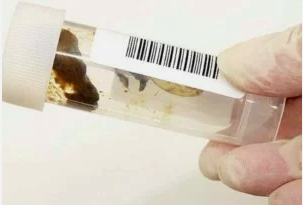
To determine worm eggs, their fragments and larvae, cysts, protozoa, use microscopic examination methods. Generally, after the detection of biological material, no additional analytical methods are applied.
Tests to identify the remaining parasites are repeated one month after completing the prescribed treatment. In total, three stools are taken every 3-4 days to monitor the appearance of eggs. If the third blood test for parasites is negative, treatment is considered effective.
Detailed stool study
Such a comprehensive analysis allows you to identify parasites in the body by eliminating the subjective factor in the analysis (a laboratory assistant cannot always notice the biological material of worms). To determine the invasion, the polymerase chain reaction method is used, which manifests the DNA of the organism that parasitizes in the human body, even if it has died or is in the cystic stage.
A detailed analysis of parasites can often detect their traces in a patient, even if the results of previously approved tests were negative.
By performing a blood test of this type for parasites, up to 17 species can be diagnosed, which will allow prescribing the correct and effective treatment.
Stool analysis after bowel cleansing
For the study, several samples are needed, they are made up as follows: the patient is given a laxative, after each bowel movement, a sample is taken, numbered and then analyzed the next day. Traces of invasions are usually found no earlier than 5-6 samples. Even if a negative result is obtained, it cannot be said with total certainty that there are no worms in the body; the method is only 50% effective.
Slime Research
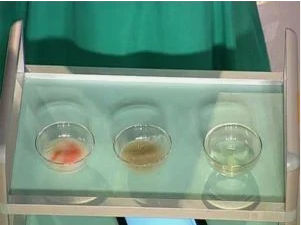
The rectal mucus laboratory examination method allows you to determine the invasion of lamblia (which in many cases are provocateurs of irritable bowel syndrome) and some other types of parasites. A mucus smear is taken for analysis using a special mirror, which is subjected to microscopic examination.
A perineal smear is used to determine pinworm infestation. To do this, in the morning, a scraping is taken from the area closest to the anus (pinworms crawl out to lay worms at night).
Blood test
Examination of stool sometimes cannot detect invasion. A blood test is more informative: it will be the best way to confirm the signs of the existence of parasites and allows you to diagnose tissue invasions (echinococci, whipworms, parasitize in tissues, they do not secrete eggs in the intestines and the feces cannot detect it).
It is possible to test the blood for parasites by detecting antibodies against a certain type of worms, which will reveal their presence, the depth of damage to the human body. What is a blood test called for parasites, which will determine the pest that has entered the body?
The modern method uses an analysis of antibodies that are specific for each species and are produced in response to toxins secreted by helminths.
How to recover from parasites
A detailed analysis of the stool is capable of identifying 17 different parasites, so when the doctor discovers what plague is in the patient's body, he prescribes drugs that aim to destroy a certain type of parasite.
However, if the parasite cannot be identified, the doctor may prescribe a mixture of medicinal herbs, including magnesia with caprylic acid, barberine, tribulus extracts, wormwood, grapefruit, barberry, bear berry, and walnut. black.
These ingredients can usually be found at the pharmacy. By forming beneficial gut bacteria, these herbal formulas provide a wide range of actions to combat the most common pathogens found in the human gastrointestinal tract.
Before starting the fight against parasites with the help of medicinal herbs, it is recommended to consult a doctor, and in case of previous liver diseases, excessive alcohol consumption or a previously observed increase in the level of liver enzymes, it is worthworth checking your level again.
If you suspect the presence of parasites living in the liver, a probing and verification of the extracted material is assigned. If the test results show the presence of these parasites, then long-term treatment is carried out under stationary conditions, which does not always lead to a positive result.
To prevent parasite infection, always wash your hands before eating with soap and running water, and wash fruits, vegetables, and herbs thoroughly. After washing, everything should be doused with boiling water.
Do not drink water from unverified sources or expose it to a boil. Boil and fry meat and fish thoroughly. Do not consume cow's milk without boiling. It's best to get tested and pasteurized dairy products from the store. Do not forget to do a preventive deworming for pets, treat them in time for fleas. Get rid of rodents that often live in basements.
If you have any suspicions about the presence of a parasite in your body, you should consult your doctor to order a detailed fecal analysis. After all, it all starts in the intestines, and the intestines are the road to health. A healthy gut is a healthy person.
At home, the easiest way to look for pinworms. The first sign of enterobiasis is intense itching in the anus, where the female pinworms lay their eggs. Therefore, it is worth conducting a duct tape test, preferably with the help of a kit purchased from a pharmacy, but you can also use improvised means.
You will need a piece of tape, a small piece of clear glass (it must be absolutely clean and dry), and a strong enough magnifying glass. The adhesive tape is firmly applied to the skin tissue in the anus, then it is carefully removed and the adhesive side is placed on the glass. Small, whitish pinworm eggs can now be seen through the magnifying glass.
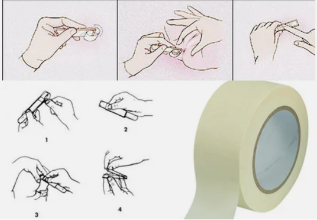
For reliability, it is best to test this type of tape multiple times within 10-12 days. The test is done immediately after waking up, before using the bathroom and water procedures, so as not to wash the eggs.
A more versatile and unpleasant, yet relatively correct way to find out if there are worms in the body is to take an enema, then use a cleanly washed pot and check the "purity" of the stool. If you notice tiny white worms or eggs, see your doctor immediately and begin treatment.
Remember that it is not always possible to determine the presence of worms in this way, so you should not limit yourself to them. Also note that if you choose this option, if possible, it is worth doing the full moon verification procedure closer to night.
At this time, the worms, as a rule, begin their reproductive peak and are therefore easier to notice. The procedure should be performed shortly before bedtime, as parasites usually lay eggs during the period when the host is resting.
Complications of parasitic diseases
During the life or death of the parasite, toxic substances are released into the host's body. They can cause weakness, constant fatigue, dizziness, headache, nausea, decreased appetite. In addition, these substances cause sensitization of the body, which causes allergies: skin rash, dermatitis, bronchitis.
Many parasites choose the human gastrointestinal tract as a habitation. When strengthened in the intestines, in addition to nutrition, parasites damage and destroy mucosal cells and blood cells. Extensive damage to the mucous membrane can manifest itself as pain, nausea, and digestive and nutritional problems.
A large number of parasites (for example, roundworms), entwined into a ball, can cause intestinal blockage and acute intestinal obstruction. The risk of this complication is especially high in young children, because they already have the intestinal lumen.
The parasite is so named because the interests of the host's organism are not overly concerned. It takes all the necessary elements from food, depriving the host of many necessary nutrients - minerals and vitamins. Therefore, one of the consequences of parasitic diseases is hypovitaminosis and avitaminosis, which can manifest themselves in a decrease in immunity, deterioration of the state of the skin, nails, hair, etc. anemia.
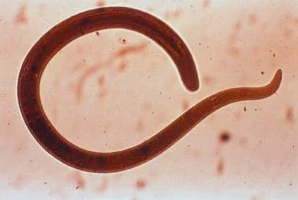
A parasite like Trichinella lives in and feeds on muscles, causing severe muscle pain. Parasites that live or multiply in the bile ducts (for example, opisthorchiae) can cause blockages in the bile ducts, manifested by jaundice of the skin and sclera, itching.
Parasites are a source of regular chronic damage to cells, causing their malignant changes and the development of cancer.
Another danger of parasites is that an infected person becomes, in most cases, the cause of the infection of other people. As a result, all family members can get sick if one of them has the parasite.
The appearance of cysts in the brain can lead to the development of epilepsy and other neurological disorders. In addition, cysts are a source of abscess formation in internal organs.
To protect yourself and your loved ones from parasites, it is necessary to identify and treat parasitic diseases in a timely manner. A complete helminthiasis exam helps in this.







































